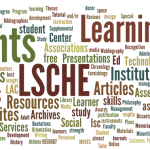Management is evaluation
Christ, F. L. (1978, November). Management is evaluation. Audiovisual Instruction, 26, 62.
Recently, the learning assistance support system (LASS) at California State University, Long Beach, contracted with the manager of the learning services center at Brigham Young University to evaluate its managerial rationale and processes. This evaluation was the sixth in an annual series of evaluations that have concentrated on LASS programs, operational procedures, materials, and equipment. In the report following the most recent evaluation, the evaluator wrote:
“The process of inviting outside specialists in for evaluation appears to be generally quite unique, and is certainly an interesting aspect of program assessment. It shows a certain confidence on the part of the management as well as a willingness to place their program in view of the critical analysis of outside observers. It shows a willingness to learn, to conduct evaluation without limitation, and that probably is a rare kind of evaluation program.”
LASS practices a management approach to fulfill its mission—a mission whose goals and objectives are annually developed by the staff, approved at the division level, published in document form, and publicly displayed on a special project board in the conference/training room of the learning assistance center. These goals and objectives form the basis for all budget requests, daily operations, data collection and analysis, and performance and operations reviews. This management approach is based on a philosophy that can be simplistically reduced to two operational maxims: (1) The unexamined activity is not worth doing and (2) Use everybody and everything to get the job done.
Getting the Job Done
Management techniques, such as management by objectives (MBO), organizational development and renewal, networking, brainstorming, force-field analysis, and decision matrixes, are used systematically. MBO, as used in LASS, is an adaptation for higher education of a management system in use by nearly two-thirds of all major U.S. corporations. Objectives are classified as routine, problem-solving, innovative, or professional/personal development.
Organizational development and renewal are strategies that provide opportunities for a group to develop esprit de corps and a sense of community. This is accomplished at LASS by scheduling weekly staff training meetings, bi-weekly case conferences of professional staff, weekly administrative briefings of operations, special occasion potluck luncheons, and semesterly daylong team building workshops at an off-campus location. For all meetings, minutes are recorded and filed. During these meetings, decision making techniques and problem solving processes are regularly used.
Networking is realized through regular attendance of designated staff at such meetings as the weekly divisional program coordinators advisory council, the bi-weekly university learning resources roundtable, and the monthly meeting of the university administrative council. In addition, all formal relationships with each of the 65 university departments are recorded on a large display board in the conference/training room.
The Unexamined Activity
LASS not only believes that the unexamined activity is not worth doing, but also that the unexamined form is not worth duplicating. Examining and evaluating all activities, procedures, and forms is an ongoing documented process. This quality control not only verifies operational effectiveness and efficiency, but also provides data for decision choices and offers opportunities for routine problem solving.
At the administrative level, this quality control is systematized with the use of an agenda that is sequenced by consensus at the beginning of each weekly administrative briefing. This itemized and individually annotated agenda form currently includes the following categories that are examined or reported on: (1) calendar of upcoming events, (2) budget, (3) personnel, (4) training, (5) equipment, (6) materials, (7) facility, (8) programs and services, (9) proposals and grants, (10) public relations, (11) evaluation, (12) objectives and tasks, and (13) special projects. Whenever a non crisis problem is encountered that seems to require extraordinary time and effort to resolve, it is scheduled for a problem solving session during semester breaks or at a special administrative session.
At the operational level, where evaluation impacts on programs and [page 26]
services, LASS documents and reviews output measures of both quantity and quality. These include a facility usage count that is charted daily, weekly, monthly, semesterly, and annually. Usage figures on learning materials are tabulated, and learner evaluations of each module are determined through a checkout form that asks learners to grade the materials they are using on a scale of A to F.
Usage statistics for special learner populations such as veteran tutorials, international student conversation lab, math lab, Project Chance, and nursing are charted and displayed for public review. In addition visitor data, testimonials, evaluation and annual reports, LASS proposals and staff publications, and public relations items are filed in binders and shelved for easy access and review by staff, visitors, and outside evaluators.
Conclusion
Management as evaluation has contributed significantly to LASS emergence as a national model and as a training and information diffusion center. Six years ago, when it began, LASS was a soft money, innovative project with a staff of five, 35 pieces of AV learning equipment, 250 learning units housed in a 945 square foot room tucked away on the third floor of the campus library, and serving 3,000 learner contacts annually. It has been transformed into an institutionalized program with a staff of 65, 125 pieces of AV learning equipment, and over 5,000 learning units that serve 50,000 learning contacts annually in 6,500 square feet of space.

